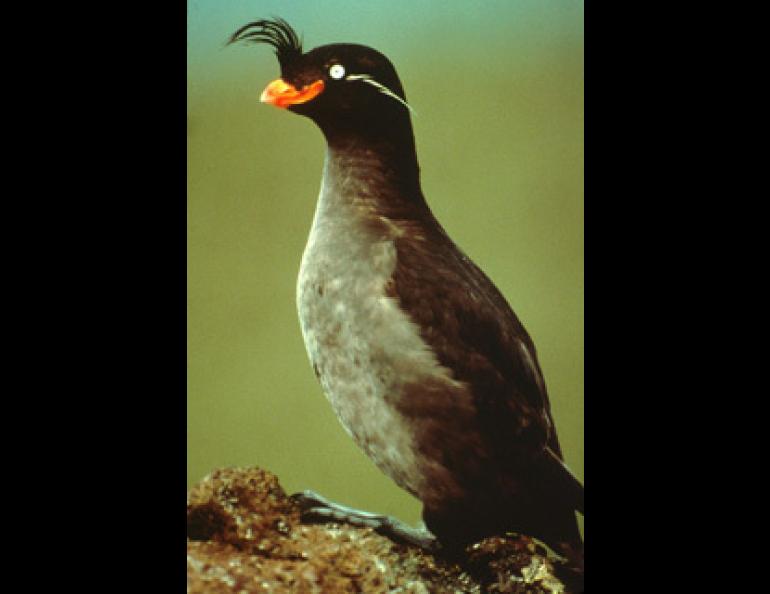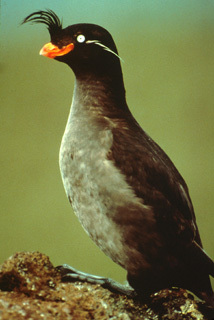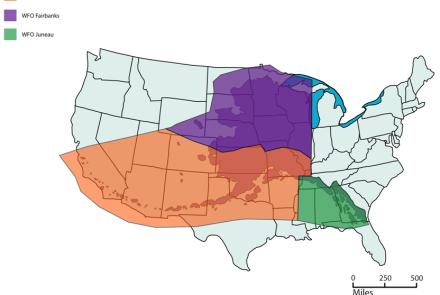
Tangerine-scented Birds may Repel Bugs, Attract Mates
Crested auklets, Alaska seabirds with whisks of feathers that sprout from their heads like ponytails, smell like tangerines. An Alaska researcher thinks the birds produce this unique scent to repel parasites and attract mates.
Hector Douglas is a biologist at the University of Alaska's Institute of Marine Science. He became intrigued when he learned that mariners know their proximity to some Bering Sea islands, even in a dense fog, when they smell a strong citrus odor emanating from very large colonies of crested auklets.
“I was curious for a long time as to what the odor’s functions might be,” Douglas said.
Why would a bird smell like a fruit? Douglas thinks two possible reasons exist: the smell may repel ticks, and a potent auklet might be more attractive to a potential mate.
By working with chemists to isolate the compounds given off by crested auklets to create their scent, Douglas found two elements the same as those secreted by stink bugs. The chemicals may work to repel ticks and other parasites that can infest breeding areas and spread disease in birds that breed in large numbers. Crested auklets spend most of their lives in the water, but gather on land by the thousands to nest in rock crevices.
“Parasites can have a huge impact on animal populations,” Douglas said. “In some years of high tick abundance, tropical seabird colonies become infected by diseases carried and transmitted by ticks. Thousands of breeding pairs abandon their nests and young.”
-more-
The stronger a crested auklet smells, the more attractive it may be to a potential mate.
“I suspect that the scent is costly to make,” Douglas said. “To have a lot of it shows that the bird is fit, and also less likely to transfer parasites to its mate and chicks.”
Crested auklets entwine their necks and rub their bills through each other’s plumage when courting. This contact may offer the birds a chance to sniff out a prospective mate, Douglas said.
If crested auklets smell like tangerines for the reasons Douglas thinks they do, the birds would be one of few breeds to produce its own chemical insect repellant. He tested his hypothesis using a low-budget setup—a stereo turntable, a can that formerly held a bottle of liquor, and ticks he ordered from Oklahoma State University.
Douglas filled the can with water he kept at body temperature and rotated it on the turntable to simulate two of the cues that attract ticks—body heat and movement. He placed ticks on a glass rod suspended near the rotating can. The ticks could choose to approach the can or to leap onto a piece of filter paper that rotated around on a raised surface. Ninety percent of the ticks jumped onto the paper when it was soaked only in alcohol. When Douglas added 10 percent octanal—the chemical that auklets and tangerines have in common—fewer than 40 percent of the ticks attached to the filter paper.
Douglas is studying how crested auklets produce their citrus odor. He has found a gland-like organ unique to the auklet, and plans to unveil more about it at a science conference early in 2002. Later in the year, he will travel to a research center in Florida to test the effectiveness of the crested auklet’s chemical cocktail on mosquitoes.





